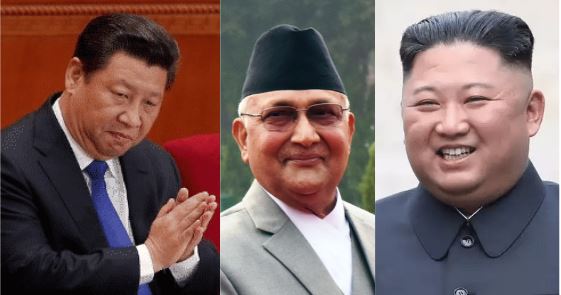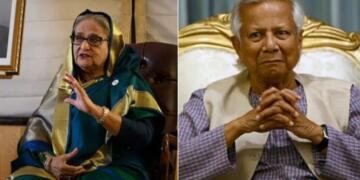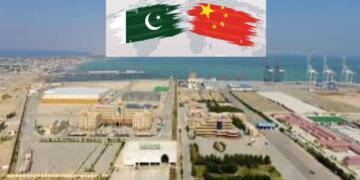Amidst growing hostile sentiment, China is fighting endless wars with the democratic world across all its frontiers from the East China Sea to the South China Sea and the Himalayas. In order to fight its battles, Beijing is making prolific use of its proxies like North Korea, Pakistan and Nepal.
In the Korean peninsula, China is of course perturbed by South Korea, a US ally. Recently, China picked up a fight with South Korea over deployment of the US THAAD (Terminal High Altitude Area Defence) system in the country. Beijing re-iterated its objections following replacement of the old interceptor missiles with new ones at the US base in South Korea.
It is not a mere coincidence that at around the same time North Korea is threatening war upon South Korea. Recently, Kim Jong-un led North Korea blew up a liaison office which was a symbol of easing tensions between South Korea and North Korea over the years.
The inter-Korean liaison office was set up in the industrial town of Kaesong in 2018 and was being used for communication between both sides with around 20 staff members from both North and South Korea.
North Korea’s sudden show of belligerence against South Korea is being led by Kim Jong-un’s younger sister Kim Yo-jong. Recently, she said, “By exercising my power authorized by the supreme leader, our party and the state, I gave an instruction to the arms of the department in charge of the affairs with enemy to decisively carry out the next action.”
Pyongyang is also threatening to nuke the United States. It claims that it is ready to use nuclear weapons in response to “hostile policy” by Washington.
A North Korean Foreign Minister report read, “In order to eliminate the nuclear threats from the US, the DPRK (Democratic People’s Republic of Korea) government made all possible efforts either through dialogue or in resort to the international law, but all ended in vain.”
It added, “The option left was only one, and that was to counter nuclear with nuclear.”
China is exploiting its client State- North Korea to the fullest. Pyongyang is perilously dependent on China, its closest and the most influential partner. China is the reason for North Korea’s survival as it accounts for over 90 per cent of North Korea’s trade.
Kim Jong-un’s nuclear talks with Donald Trump got stalled and North Korean economy has hit a new low amidst the ongoing Coronavirus Pandemic. Therefore, Pyongyang is trying to warm up to China and bring trading ties back to normal as soon as possible.
Kim hasn’t been averse to balance Chinese influence, and in fact there has been a pattern of playing Russian and Chinese leaders against each other in order to draw maximum leverage from both sides. This is the only means of the secret Communist State’s survival but China is clearly dominating.
Kim Jong-un is an absolute dictator. But the only man he bows down to is the Chinese President Xi Jinping. China is effectively negotiating with the US and South Korea through its proxy.
In 2018, Kim Jong-un visited Beijing in the run up to a planned meeting with the US President and an upcoming summit with the South Korean President Moon Jae-in. He was seen taking notes attentively as Jinping spoke. The Chinese President, of course, did not take notes when Kim spoke. Xi patted Kim’s hand during a handshake showing who dominated the bilateral meeting.
China literally dictates terms to North Korea, and we can see how it plays out.
Towards its South and Southwest, China looks at India as a major adversary, especially in a post-Coronavirus world. India wants to replace China as the global manufacturing hub and New Delhi is gradually strengthening its ties with Washington and other democratic allies like Australia, Japan and South Korea.
While China is locked in a military stand-off in Eastern Ladakh, it has used Nepal’s Communist Prime Minister KP Sharma Oli as a new front against India.
Oli has been raking irredentism against India. He has revised Nepal’s political map through a Constitutional Amendment, showing Indian territories of Limpiyadhura, Lipulekh and Kalapani in Nepal.
Now, the Communist regime is also laying claim on Bihar’s East Champaran as it denied Bihar’s Water Resource Department from constructing an embankment to prevent flooding.
Behind the scenes, China is pulling the strings in Nepal. The ruling Nepal Communist Party was headed for an imminent split. KP Sharma Oli would have been unseated, but the Chinese Ambassador Hou Yanqi held a series of meetings with the party leaders and saved the day.
Thereafter, Oli has been serving China’s interests for obvious reasons. Hou Yanqi continues to decide Kathmandu’s India policy and the Communist Party of China (CCP) has also been coaching the Nepalese Communists through workshops.
China’s strategy is to show India as an occupational force in its vicinity- Nepal, Pakistan and China, and it is using Nepal to push this propaganda.
Pakistan, of course, remains a virtual Chinese colony. As India and China got engaged in a military stand-off at the Line of Actual Control (LAC), Pakistan accelerated ceasefire violations along the Line of Control (LoC).
China continues to play dirty. It is using proxies to fight all its battles with South Korea, the US and India.


































